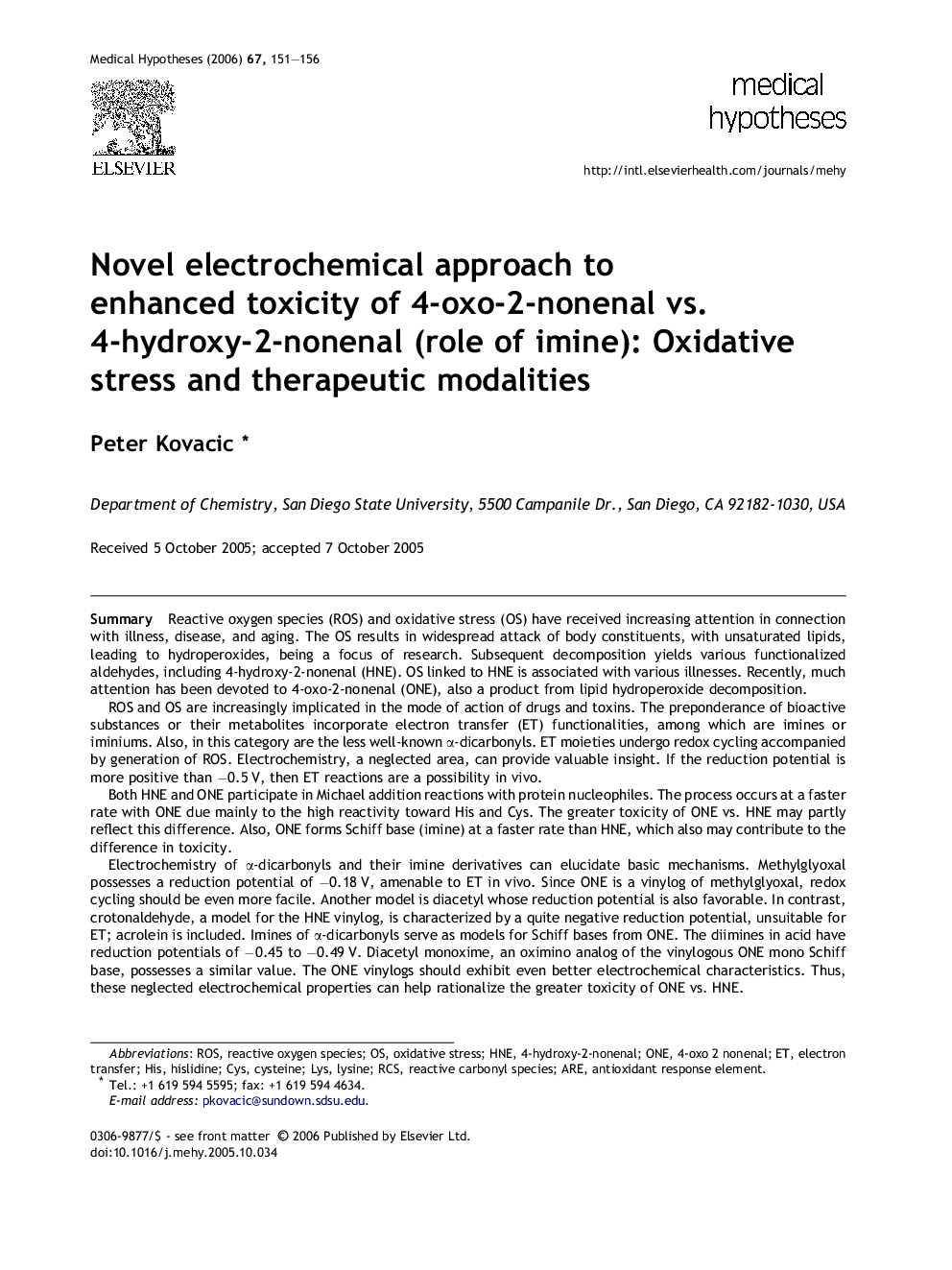| کد مقاله | کد نشریه | سال انتشار | مقاله انگلیسی | نسخه تمام متن |
|---|---|---|---|---|
| 2492692 | 1115114 | 2006 | 6 صفحه PDF | دانلود رایگان |

SummaryReactive oxygen species (ROS) and oxidative stress (OS) have received increasing attention in connection with illness, disease, and aging. The OS results in widespread attack of body constituents, with unsaturated lipids, leading to hydroperoxides, being a focus of research. Subsequent decomposition yields various functionalized aldehydes, including 4-hydroxy-2-nonenal (HNE). OS linked to HNE is associated with various illnesses. Recently, much attention has been devoted to 4-oxo-2-nonenal (ONE), also a product from lipid hydroperoxide decomposition.ROS and OS are increasingly implicated in the mode of action of drugs and toxins. The preponderance of bioactive substances or their metabolites incorporate electron transfer (ET) functionalities, among which are imines or iminiums. Also, in this category are the less well-known α-dicarbonyls. ET moieties undergo redox cycling accompanied by generation of ROS. Electrochemistry, a neglected area, can provide valuable insight. If the reduction potential is more positive than −0.5 V, then ET reactions are a possibility in vivo.Both HNE and ONE participate in Michael addition reactions with protein nucleophiles. The process occurs at a faster rate with ONE due mainly to the high reactivity toward His and Cys. The greater toxicity of ONE vs. HNE may partly reflect this difference. Also, ONE forms Schiff base (imine) at a faster rate than HNE, which also may contribute to the difference in toxicity.Electrochemistry of α-dicarbonyls and their imine derivatives can elucidate basic mechanisms. Methylglyoxal possesses a reduction potential of −0.18 V, amenable to ET in vivo. Since ONE is a vinylog of methylglyoxal, redox cycling should be even more facile. Another model is diacetyl whose reduction potential is also favorable. In contrast, crotonaldehyde, a model for the HNE vinylog, is characterized by a quite negative reduction potential, unsuitable for ET; acrolein is included. Imines of α-dicarbonyls serve as models for Schiff bases from ONE. The diimines in acid have reduction potentials of −0.45 to −0.49 V. Diacetyl monoxime, an oximino analog of the vinylogous ONE mono Schiff base, possesses a similar value. The ONE vinylogs should exhibit even better electrochemical characteristics. Thus, these neglected electrochemical properties can help rationalize the greater toxicity of ONE vs. HNE.Toxicity of the aldehydes may be countered by various approaches: formation of non-toxic imines, carboxylic acids, and Michael adducts. Genetic methods and AO therapy are treated.
Journal: Medical Hypotheses - Volume 67, Issue 1, 2006, Pages 151–156